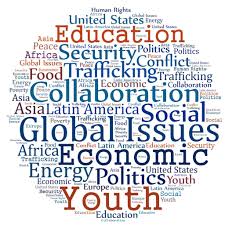Revolutionizing Urban Spaces: A Blueprint for Sustainable Communities
The relentless growth of our urban centers demands a fundamental shift towards sustainable living. As cities expand, the urgent need to prioritize environmental well-being alongside the needs of their inhabitants becomes paramount. Building globally sustainable cities and communities isn't merely an environmental imperative; it's the cornerstone of a future that thrives economically and socially. This article delves into fifteen key strategies for transforming urban landscapes into thriving, sustainable ecosystems.
1. Strategic Urban Planning: Sustainable communities begin with thoughtful urban design. Walkability, mixed-use zoning, and ample green spaces are crucial elements, fostering healthier, more vibrant neighborhoods that prioritize resident well-being. Efficient public transport integration is also key.
2. Embracing Renewable Energy: Transitioning to renewable energy sources, such as solar and wind power, is non-negotiable. Minimizing reliance on fossil fuels drastically reduces a city's carbon footprint, paving the way for a cleaner, healthier environment for all.
3. Optimizing Transportation Networks: Efficient and sustainable transportation is critical for mitigating congestion and air pollution. Investing in robust public transit, promoting cycling and walking infrastructure, and supporting electric vehicle adoption are all vital components of a greener urban commute.
4. Innovative Waste Management: Comprehensive waste management strategies, including robust recycling and composting programs, are essential for minimizing landfill waste. Furthermore, embracing a circular economy, which emphasizes resource reuse and reduction, significantly lessens environmental impact.
5. Cultivating Urban Agriculture: Integrating urban farming initiatives – rooftop gardens, community plots – offers dual benefits. These initiatives provide access to fresh, locally sourced food while simultaneously enhancing urban resilience and strengthening community ties.
6. Harnessing Green Infrastructure: Green infrastructure, including green roofs, rain gardens, and permeable pavements, plays a vital role in managing stormwater runoff. Beyond this, it offers a multitude of ecological advantages, improving air quality and biodiversity within the urban environment.
7. Leveraging Smart Technologies: Smart technologies offer unparalleled potential for optimizing resource management, enhancing energy efficiency, and improving overall urban life. Smart grids, intelligent transportation systems, and smart buildings are examples of this transformative technology.
8. Ensuring Affordable and Sustainable Housing: Access to affordable, energy-efficient housing is fundamental to creating equitable and sustainable communities. Prioritizing affordable housing options within urban planning ensures inclusivity across all income levels.
9. Fostering Environmental Education and Awareness: Educating citizens about sustainable practices and raising awareness of environmental issues empowers individuals to make conscious choices, actively contributing to a greener urban future.
10. Embracing Citizen Participation: Active citizen involvement in decision-making processes is crucial. Engaging residents in the planning and development of their communities fosters a sense of ownership and helps create truly livable, sustainable urban spaces.
11. Promoting Sustainable Tourism: Sustainable tourism practices benefit both the environment and the local economy. Promoting responsible tourism preserves cultural and natural heritage while generating economic opportunities for the community.
12. Building Collaborative Partnerships: Successful sustainable development requires strong collaboration between governments, businesses, academia, and civil society. Shared knowledge, resources, and expertise are key to building more resilient communities.
13. Enhancing Urban Resilience: Cities must proactively address the challenges of climate change and other environmental threats. Integrating resilience strategies into urban planning ensures communities can withstand and recover effectively from natural disasters.
14. Prioritizing Social Equity: Sustainable communities must champion social equity, guaranteeing all residents equal access to essential services, amenities, and opportunities. Addressing social inequalities creates more inclusive, cohesive urban environments.
15. Continuous Monitoring and Improvement: Building sustainable communities is an iterative process requiring ongoing evaluation and adaptation. Regularly monitoring progress, analyzing outcomes, and adjusting strategies are essential for continuous improvement.
In conclusion, the transition to sustainable urban communities is not merely desirable, it’s essential for the well-being of our planet and future generations. By embracing innovation and the core principles of sustainability, we can create thriving cities that are environmentally responsible, economically prosperous, and socially equitable. Join us in this transformative journey towards a sustainable future.






No comments yet. Be the first to share your thoughts!